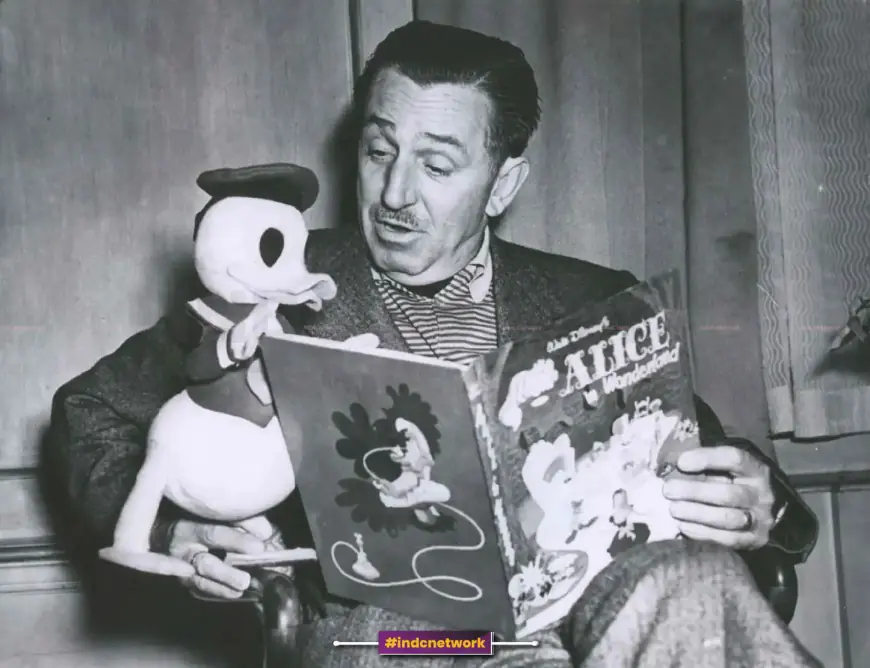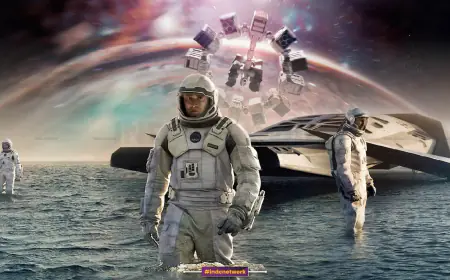The Magical Empire of Walt Disney: How One Man’s Dream Revolutionized the World of Entertainment
Walt Disney, the visionary who founded The Walt Disney Company, created an empire that transformed the entertainment industry forever. From animated films to theme parks, Disney has evolved into one of the largest and most influential entertainment companies in the world. This article explores the rise of Disney, its cultural significance, the impact of Walt Disney’s innovations, and how the company continues to shape the entertainment landscape today.

INDC Network : Biography : Introduction: The Legacy of Walt Disney
Walt Disney’s name is synonymous with magic, imagination, and entertainment. From the early days of animation to the creation of theme parks that have become global destinations, Disney’s influence on both the entertainment industry and popular culture is unparalleled. What began as a modest animation studio has grown into The Walt Disney Company, a global empire that touches almost every facet of modern entertainment.
Today, The Walt Disney Company is a leader in film production, television, theme parks, and media networks, but its origins lie in Walt Disney’s passion for storytelling and his commitment to pushing the boundaries of technology and creativity. Walt Disney’s contributions to entertainment were revolutionary, and his legacy continues to shape the future of the industry.
In this article, we will explore Walt Disney’s journey from animator to global mogul, the history and evolution of The Walt Disney Company, and its ongoing impact on the world of entertainment.
Walt Disney: The Man Behind the Magic
Born on December 5, 1901, in Chicago, Illinois, Walt Disney developed a passion for art and storytelling at a young age. After struggling to find stable work in the early years of his career, Disney co-founded The Disney Brothers Studio in 1923 with his brother Roy O. Disney. The company’s early success came with the creation of Mickey Mouse, the iconic character who made his debut in the 1928 cartoon Steamboat Willie.
Mickey Mouse quickly became a household name, and Disney’s studio began to rise in prominence within the animation industry. By 1937, Disney had produced the first full-length animated film, Snow White and the Seven Dwarfs, which became an immediate success and solidified Disney’s reputation as a creative genius.
Over the years, Disney pushed the boundaries of animation and entertainment with groundbreaking films like Pinocchio, Fantasia, and Bambi. His dedication to innovation led to the development of new techniques in animation, such as the use of synchronized sound in Steamboat Willie, as well as advancements in color and special effects in later films.
Despite facing financial struggles during the Great Depression, Disney’s vision remained steadfast. He expanded into the development of new forms of entertainment, including the creation of Disneyland, the world’s first theme park, which opened in 1955 in Anaheim, California.
The Evolution of The Walt Disney Company
Over the decades, The Walt Disney Company evolved from a small animation studio into a global powerhouse. Several key milestones and acquisitions shaped the company’s growth and diversification into various sectors of entertainment.
-
The Disney Renaissance (1989-1999):
The 1990s marked the beginning of the Disney Renaissance, a period in which Disney experienced a remarkable resurgence in its animation division. Under the leadership of CEO Michael Eisner and the creative direction of John Lasseter, Disney produced some of its most iconic animated films, including The Little Mermaid, Beauty and the Beast, The Lion King, and Aladdin. These films not only reinvigorated the company’s animation division but also introduced Disney’s unparalleled ability to blend heartwarming storytelling with state-of-the-art animation. -
Acquisitions and Expanding the Disney Empire:
To strengthen its position in the entertainment world, The Walt Disney Company began acquiring other major entertainment properties. In 2006, Disney acquired Pixar, the studio behind films like Toy Story and Finding Nemo, which brought an infusion of new creativity and cutting-edge technology. Pixar’s success in the field of computer-generated animation has since been integral to Disney’s dominance in animation.
In 2009, Disney acquired Marvel Entertainment, adding iconic superhero franchises like Iron Man, Spider-Man, and The Avengers to its portfolio. This acquisition opened the door for the creation of the Marvel Cinematic Universe (MCU), which has become one of the highest-grossing film franchises of all time.
In 2012, Disney made another game-changing acquisition by purchasing Lucasfilm, the production company behind Star Wars. This acquisition allowed Disney to take control of the Star Wars franchise, which has since been expanded through new films, television series, and merchandise.
- Disney’s Expansion into Streaming:
In recent years, Disney has expanded into the streaming world with the launch of Disney+, a direct-to-consumer streaming service that offers an extensive library of Disney films, TV shows, and exclusive content. The success of Disney+ has made it a formidable competitor to established streaming giants like Netflix and Amazon Prime Video. Disney+ is not only home to Disney’s classic animated films but also original content like The Mandalorian, WandaVision, and Loki, based on the Marvel and Star Wars universes.
The Impact of The Walt Disney Company on Pop Culture
Over the course of its history, The Walt Disney Company has had a profound impact on pop culture. Its iconic characters, beloved animated films, and immersive theme parks have become an integral part of the global cultural fabric. Here are some key areas in which Disney’s influence is felt:
-
Iconic Characters and Stories:
Characters like Mickey Mouse, Donald Duck, Goofy, and Daisy Duck are not just cartoon characters—they are cultural icons. Disney’s ability to create universally relatable characters has allowed it to capture the hearts of generations of fans worldwide. Stories like Cinderella, Sleeping Beauty, and The Jungle Book are timeless fairy tales that continue to resonate with audiences today. -
Theme Parks and Resorts:
Disney’s theme parks, including Disneyland and Walt Disney World, have become destinations for millions of families around the world. These parks are not just amusement parks—they are magical experiences that immerse visitors in the worlds of Disney films and characters. From Main Street, USA to Tomorrowland, Disney’s theme parks are a testament to the company’s commitment to creating a complete entertainment experience. -
Merchandising and Licensing:
Disney’s vast portfolio of intellectual property (IP) has led to the creation of an expansive merchandise empire. From toys and clothing to food products and home decor, Disney products are found in virtually every retail store across the globe. Licensing agreements with major brands have made Disney a dominant force in the world of merchandise. -
Film and Television:
Disney’s films, both animated and live-action, have shaped the film industry for decades. From the early classics like Snow White to modern-day blockbusters like the Marvel and Star Wars franchises, Disney has continuously raised the bar for storytelling, animation, and production quality. Additionally, Disney’s television networks, including ABC, ESPN, and Disney Channel, have further solidified its presence in entertainment.
Challenges and Opportunities for The Walt Disney Company
While The Walt Disney Company has enjoyed decades of success, it faces several challenges in the evolving entertainment landscape. Some of these challenges include:
-
Competition in Streaming:
As more companies enter the streaming space, Disney+ faces increasing competition from platforms like Netflix, Amazon Prime Video, and HBO Max. Disney will need to continue to produce compelling original content to maintain its subscriber base and attract new users. -
Content Fragmentation:
With the rise of streaming services, consumers now have access to a vast array of content across various platforms. This fragmentation of content means that consumers are more selective about where they spend their entertainment dollars, presenting challenges for traditional media networks and film studios. -
Theme Park Attendance:
Disney’s theme parks, which were once major revenue drivers, were significantly impacted by the COVID-19 pandemic, leading to park closures and reduced attendance. As the world recovers, Disney must adapt to new health and safety standards and attract visitors back to its parks.
Conclusion: The Future of Disney and Its Continuing Legacy
Walt Disney’s dream of creating a magical world of entertainment has flourished into a multi-billion dollar company with a global influence. The Walt Disney Company continues to evolve, from animation and theme parks to streaming services and merchandising. The company’s ability to adapt to changing times while maintaining its core values of creativity, innovation, and storytelling has ensured its enduring legacy.
As Disney moves forward, it will continue to shape the entertainment industry through strategic acquisitions, groundbreaking content, and immersive experiences. The company’s impact on pop culture, technology, and family entertainment remains unrivaled, and the future of The Walt Disney Company will undoubtedly include new innovations that will continue to inspire audiences for generations to come.
What's Your Reaction?













































































































































































